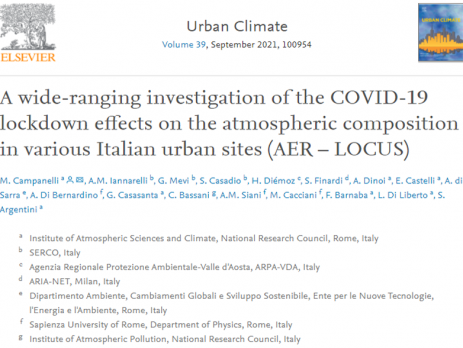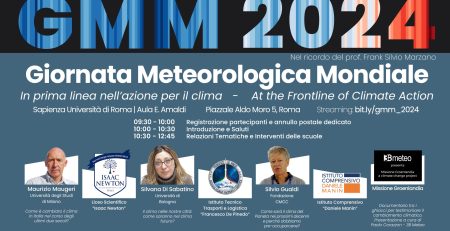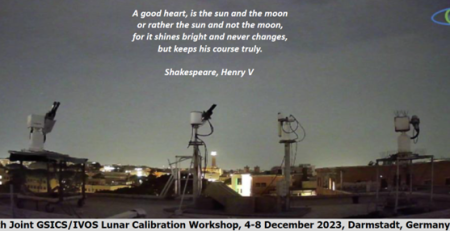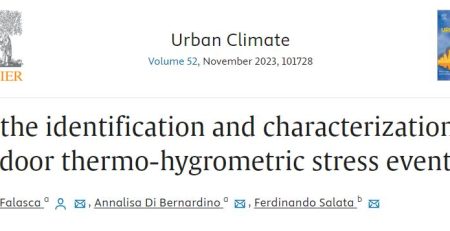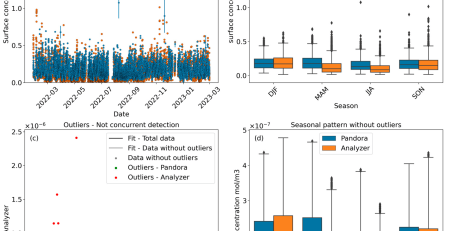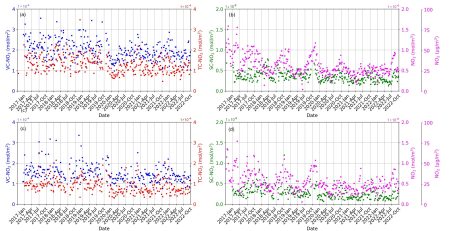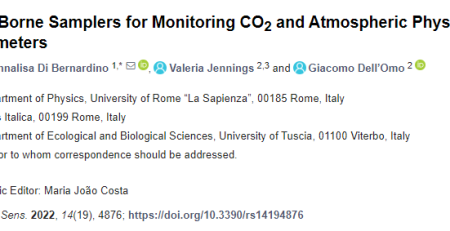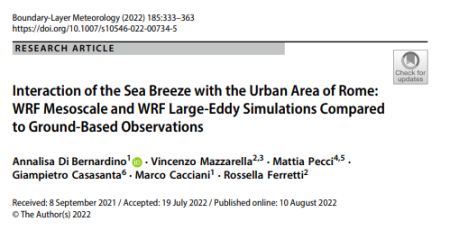Article published on Urban Climate: A wide-ranging investigation of the COVID-19 lockdown effects on the atmospheric composition in various Italian urban sites (AER– LOCUS)
Abstract: A widE-Ranging investigation of the first COVID-19 LOCkdown effects on the atmospheric composition in five Italian Urban Sites (AER–LOCUS) has been carried out and is presented in this study. The analysis uses particle and gas concentrations from surface in situ sampling, column aerosol and gas properties from photometer/spectrometers, and satellite NO2 determinations at five sites distributed over the whole Italian territory: Aosta, Milan, Bologna, Rome, and Taranto. These data are related to meteorological conditions to identify the numerous events of long-range transport and separate local from remote influences. Four different types of long-range transport over Italy are identified during the lockdown period, affecting PM10, PM2.5, and NO2 concentrations, and aerosol optical depths: fires plumes from Eastern Europe and Montenegro, dust from the Caspian area and from the Sahara, and pollution from the Po Valley. Once the long-range transport events are identified and excluded, the variation of gas and particle concentrations occurring during the containment period is calculated with respect to the period 2015–2019. A general decrease of PM10 (ranging from a maximum of – 52% in Aosta to a minimum of – 4% in Taranto), PM2.5 (from – 46% in Aosta and Milan to – 0.6% in Bologna), BC (from – 77% in Aosta to – 25% in Milan), NO2 (from – 72% in Rome to – 4% in Taranto), and benzene (about – 50%) concentration is found. A positive variation of PM2.5 is conversely found during March in the southern sites due to some stagnation events, and a strong increase of benzene (up to +104%) in the industrial area of Taranto. Ozone is found to increase by an average of about 30% in all sites. The removal of the long-range transport contributions affects the variations with respect to the reference period reducing the concentrations by up to 22% for PM10 and 29% for PM2.5 in the northern sites, and 18% for PM10 and 16% for PM2.5 in the southern sites. For NO2 the reduction due to the removal is up to 14% in Milan and 6% in the southern sites, while for the aerosol optical depth it is up to 70% in Aosta and 50% in Rome.
Authors: Monica Campanelli et al.
DOI: 10.1016/j.uclim.2021.100954









